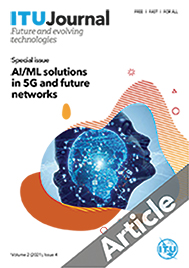|
Graph-neural-network-based delay estimation for communication networks with heterogeneous scheduling policies
|
Authors: Martin Happ, Matthias Herlich, Christian Maier, Jia Lei Du, Peter Dorfinger
Status: Final
Date of publication: 25 June 2021
Published in: ITU Journal on Future and Evolving Technologies, Volume 2 (2021), Issue 4 - AI and machine learning solutions in 5G and future networks, Pages 1-8
Article DOI : https://doi.org/10.52953/TEJX5530
|
 | Abstract:
Modeling communication networks to predict performance such as delay and jitter is important for evaluating and optimizing them. In recent years, neural networks have been used to do this, which may have advantages over existing models, for example from queueing theory. One of these neural networks is RouteNet, which is based on graph neural networks. However, it is based on simplified assumptions. One key simplification is the restriction to a single scheduling policy, which describes how packets of different flows are prioritized for transmission. In this paper we propose a solution that supports multiple scheduling policies (Strict Priority, Deficit Round Robin, Weighted Fair Queueing) and can handle mixed scheduling policies in a single communication network. Our solution is based on the RouteNet architecture as part of the "Graph Neural Network Challenge". We achieved a mean absolute percentage error under 1% with our extended model on the evaluation data set from the challenge. This takes neural-network-based delay estimation one step closer to practical use. |
|
Keywords: Communication networks, delay estimation, graph neural networks, scheduling
Rights: © International Telecommunication Union, available under the CC BY-NC-ND 3.0 IGO license.
|
|
|
|
| |